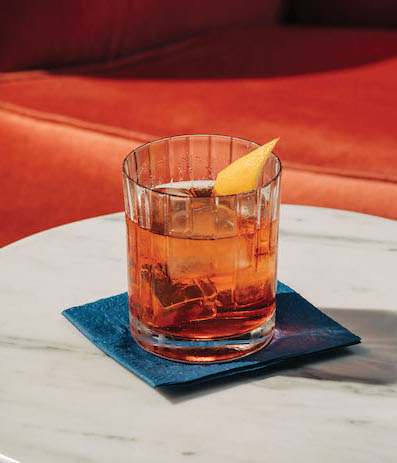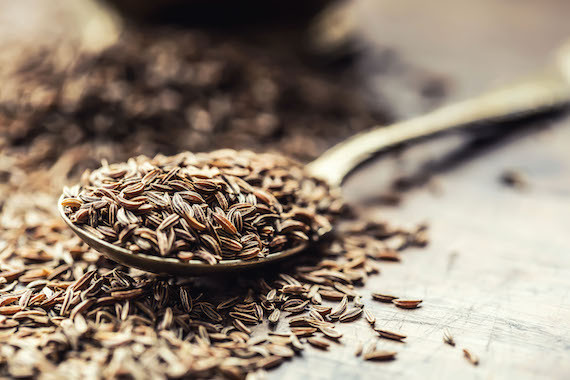I’ve been on this soapbox for 15 or 20 years; I swear someday it’s going to come to fruition as mezcal did… aquavit is so amazing.” These were the words of eminent New York bartender and inventor of the Cosmopolitan, Toby Cecchini, when he was asked which spirits category he was most excited about on an episode of Vinepair’s Cocktail College podcast. And he meant it. The Long Island Bar, which he owns, is said to boast New York’s largest collection of the Nordic botanical spirit, and he was writing columns about his love for it in The New York Times back in 2007.
While the ‘next big thing’ moniker gets bandied around all too often, it does make sense that aquavit would be poised for an explosion in popularity. After all, it’s effectively gin, a spirit that has managed to captivate palates across the world, flavoured with caraway or dill seed instead of juniper. Sometimes aquavit is cask matured, and sometimes there are regional differences in classification, but essentially it’s a spirit with mixability and versatility.
“Aquavit is a natural development of the spiced spirit category,” says Alexandra Wachtmeister, category manager at Anora Group, the crossNordic distilling group and producer of numerous Aquavit brands, including Linie, OP Anderson, and Aalborg.
“It has a far more diverse sensory profile [than other botanical spirits] as it uses both very local and very exotic herbs and spices and can be distilled or distilled and then cask matured.”
While sense suggests that the complex botanical profile of aquavit should make it a shoo-in on any drinks list, the numbers paint a different picture. According to the IWSR, category volumes are expected to decline by 0.5% CAGR between 2022 and 2026.
“Aquavit has been in long-term, gradual decline since our records began in 1990,” says Humphrey Serjeantson, research director at IWSR Drinks Market Analysis. “Most aquavit is drunk in the country where it is produced, and local consumption is the main cause of the global decline. In general, this decline is due to an ageing consumer base and a failure to recruit younger legal drinking-age drinkers to the category.
“But the quality of aquavit is getting better – so it is following the well trodden ‘less but better’ path of many alcoholic drinks categories. In 2017, premium-plus was 18% of the total, but by 2026 that figure is expected to rise to 25%. The trend towards premiumisation is marginally faster in the domestic markets than in exports, so potentially less immediately visible to an international observer.”
While the stats tell the story of a traditional spirit that has struggled to find modern, mass appeal, there is a different storyline emerging.
“The craft distilling movement has been so important for aquavit,” says Ivan Abrahamsen, once master blender at the world’s largest aquavit producer, Norway’s Arcus. In 2019 he created Rebel, an Oslo-based independent wine and spirit company that produces Meir aquavit.
“There was a monopoly in Norway until 1996. In 1996, the stores and production of Vinmonopolet (Norway’s government-owned alcohol retailer) were separated. The stores remained owned by the state, and the production unit was privatised and named Arcus. From 1996 until 2005, Arcus was the only company in Norway that was allowed to produce spirits for sale. In 2005, the production monopoly ceased, and today there are almost 30 distilleries in Norway.
“Innovation always comes from the fringe. With Meir we wanted to create something that will appeal to people who wouldn’t traditionally drink aquavit and we don’t want to release loads of different aquavits and confuse people.
“Because the process of producing aquavit and gin is very similar – they’re both botanical spirits – it’s easy for craft distillers to produce anywhere. It’s crazy, we’re now seeing aquavit being produced in Australia, the US and all these other places where it didn’t exist before.”

SCANDI CULTURE
Globally, Scandinavian culture has become hugely influential since the turn of the millennium, whether it be film and television, pop music, interior design, food or philosophy. It seems that drinking is one of the last elements of Nordic life to catch on.
“In general, people look at the Nordic countries as a representation of a certain lifestyle that fascinates many,” says Wachtmeister.
“When it comes to gastronomy, the Nordic countries have become a guiding light since the New Nordic Food manifesto in 2004. Today, people from all over the world travel to the Nordic countries just to eat, and aquavit is perfect with food.”
Perhaps the category has found itself in the same pigeonhole as other traditional regional spirits, such as shochu and baijiu, where awareness and intrigue may be growing internationally, but people aren’t necessarily sure what to do with it.
“Aquavit has fantastic mixability, it’s amazing as ‘seasoning’ for drinks – we use so much,” says Monica Berg, co-owner of London bar Tayer + Elementary and who in 2015 was awarded the Linie Honorary Award for her contributions to Norwegian food and drink culture.
“It has often been much more regarded by bartenders outside the Nordics – the US and London have championed it in cocktails for decades. Bartenders love aquavit for its uncompromising flavours and complexity, which particularly shine when mixed in cocktails. Whether it’s to make a twist on a classic such as Nordic Negroni or Aquavit Colada, or a modern classic like Nomad’s North Sea Oil.”
Meir’s five aquavit expressions are all designed to be mixed into cocktails. The fresh, piney Meir No.1 works in a Gimlet or mixed with tonic; grapefruit-flavoured Meir Pink can be swapped into a Paloma; the oak-aged Meir Classic works in a Penicillin; the Christmassy Meir Jul stands up in a Negroni; and the Madeira cask-aged Snavvel can swap into many rum classics.
While the world is introduced to an ever-broadening array of aquavits, in the past year the category at large has seen a dramatic shift as Norway’s Arcus merged with Finland’s Altia, forming Anora Group, now the world’s largest aquavit producer by some margin. The scale of the merger was such that the Norwegian Competition Authority considered intervening, citing that it may weaken market competition.
“I think Anora has 70-80% of the Norwegian aquavit market share,” says Abrahamsen. “It owns all the big, traditional aquavit brands from the Nordic countries but hopefully it will see the emergence of craft distilleries as a good thing for the category in the international markets.”
And Wachtmeister agrees: “The craft distilling industry has developed and especially the aquavit category as a new and contemporary spirit category with a strong local history that has helped it to become more interesting and attractive to the modern consumer.
And perhaps with the heft of a company like Anora now behind the category, the spirit has a platform to spread further and faster.
“With the merger, Anora has a unique portfolio of iconic local, regional and global wine and spirits brands. Combined with even stronger consumer insight and innovation capabilities,” says Wachtmeister, “Anora can achieve growth in and beyond its home markets and meet changing consumer needs even better.”
Whether Cecchini’s prediction that aquavit can be “the next mezcal” comes true or not is one for the oracles. What is clear is that aquavit is a category with immense potential and an easy point of difference for buyers, bartenders and drinks enthusiasts. With the formation of Anora group and the birth of international producers, it’s a spirit that’s become easier than ever to find and, given its variety, it’s worth the exploration.




